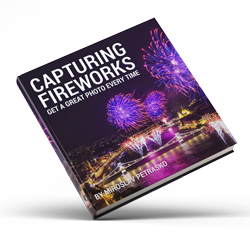Do you need the best camera?
I, probably as many other photographers, get the same questions all the time. Which is the best camera? Which one should I buy? Which one will make my photos better? (btw. the answers here are depends, depends and probably none) Since that is the case, I will share some of my though on this topic with you today.
Btw. If you goal is to show off that you have the best and priciest camera, that by all means get that. If that was the reason to buy, you probably don’t care about taking photos anyway, and it will just sit in some shelf somewhere.
When you don’t need a better camera
You often don’t need a better camera at all. To get better photos you usually need to change other things.
Is your composition good?
The most important thing about a photo is the composition. If your composition is bad, the photo is bad. And a better camera will not help you with this. Instead look for tutorials, guides, look at other photographers work and practice more.
Did you learn the basics?
Here I don’t mean just how to control you camera, but much more. Modes, histogram, focusing, choosing the best settings and so on. While the software in the camera is quite smart, you usually can get much more if you do things yourself. Even the best camera will not focus properly all the time, will not choose the best settings for what you need, and sometimes it can even make thing worse. I still remember the day when I switched to manual focusing. My photos became so much sharper instantly.
Do you edit your photos?
Continuing from the previous point. By post-processing your photos you can get much better results than directly from a camera. Try choosing a software you like and learning how to use it. Photoshop, Lightroom, Aurora or similar. Most are not that hard to get into and you can get them quite cheaply.
You maybe need something else
Maybe you don’t need a better camera, but an accessory. Again this depends on the type of photography. But maybe you need a sturdy tripod if you want to do landscapes. Or an external flash if you do portraits.
When you need a better camera
This is very depending on what you do. But here are few reasons.
You need higher resolution
This happened to me. As quite a lot of my photos end up being printer big, especially as wall sized posters, I just needed more resolution. I just can’t make a panorama of every photo. Also screen resolutions go up and up every year. 4k is equal to 8Mpix, 8k to 33Mpix. That is a crazy amount of pixels. And yes, there are upscalers, but they are not always the solution.
You need a faster camera
There are type of photography, where a fast camera and even faster focusing is a must. Sports photography is a good example here. If your camera is slow, you will not get the shot. It has to be able to save the photo quickly and focus even quicker.
Your work demands it
This is a bit indirect reason, but it can happen. For instance I bought a TSE lens, because I knew I would have to do over a 1000 interior photos for a client. So having this did make the whole work quicker and much easier.
Weather and dust resistance
Better cameras usually have better weather and dust resistance, and are made from stronger materials. You can see it if you compare a pro camera to a consumer one. There are much more resistant. My lenses fell on the ground, my camera fell, my tripod got bend and similar. Things happen. Everything works.
In the end, one has to decide for oneself if one needs a better camera or not. New stuff is always nice. But if you will not use anything from what the new camera will bring, what’s the point.

























